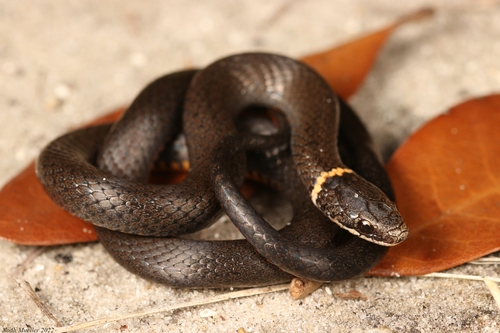
Ring-necked snake
The ring-necked snake, Diadophis punctatus, captivates with its vibrant neck band. A secretive woodland resident, this snake quietly fulfills its ecological role by controlling small prey populations. Its mild venom and nocturnal habits add intrigue to its understated presence in the ecosystem.
6-7 years
Lifespan
Least Concern
Conservation Status
Stable
Population Trend
Distribution Range of the Ring-necked snake
Diadophis punctatus, commonly known as the Ring-necked Snake, is native to North America. Its geographical distribution includes much of the eastern and central United States, extending into parts of southeastern Canada and northern Mexico. It is found from the southern Great Lakes through the eastern states, as well as parts of the Midwest and southward to the Gulf of Mexico.
Ring-necked snake's Habitat
Environmental Conditions
Ring-necked Snakes inhabit diverse environments, typically preferring regions with moist conditions. They are commonly found in woodlands, grasslands, rocky hillsides, and near bodies of water like streams and ponds. These snakes favor areas with abundant ground cover such as logs, rocks, and leaf litter, which provide protection and sites for thermoregulation.
Ecological Niche
Diadophis punctatus is primarily terrestrial and nocturnal, playing a role as both predator and prey within its ecosystem. It typically preys on small amphibians, earthworms, and small reptiles. The species is known for its secretive nature and ability to remain hidden due to its slender body and cryptic coloring.
Copyright @ Nature Style Limited. All Rights Reserved.
 English
English